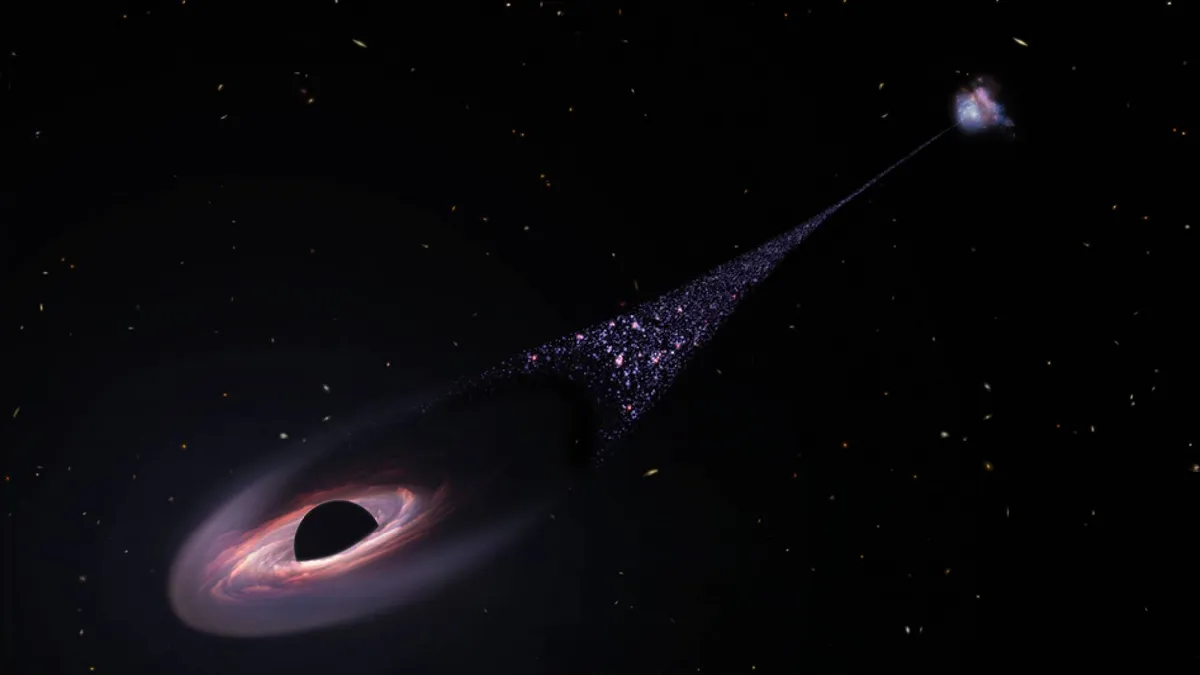Spotted: A runaway black hole leaves a trail of stars
- April 7, 2023
- 0
Astronomers at Yale University and NASA are trying to detect a “runaway” black hole. It contains “a supermassive black hole ejected from the center of its galaxy by
Astronomers at Yale University and NASA are trying to detect a “runaway” black hole. It contains “a supermassive black hole ejected from the center of its galaxy by

Astronomers at Yale University and NASA are trying to detect a “runaway” black hole. It contains “a supermassive black hole ejected from the center of its galaxy by the gravitational force of multiple simultaneously interacting black holes,” the organizations said on Thursday.
A potential black hole has been discovered in Hubble telescope images. If further observations confirm the discovery of a celestial body, it could weigh in on the 50-year-old theory.
“It was an incredible intuition,” said Yale University’s Peter van Dokkum, lead astronomer of the multi-institutional research team. “We noticed an almost straight line of light in the Hubble images pointing to the heart of the galaxy. We’ve never seen anything like it before, so we decided to examine it within a month using the Low Resolution Imaging Spectrometer from the Keck I telescope.”
The researchers suggest that this event was the result of three black holes merging after the galaxies collided about 40 million years ago. This galactic buildup unleashed massive gravitational forces that saw one of the black holes rapidly move away from the “collision site”.
Researchers now estimate that the black hole has a mass of 10 million suns and is speeding through space at 4 million miles per hour. It draws a 200 light-year-long gas line behind it. The idea of an out-of-control black hole first appeared in the 1970s.
“It was very exciting to put this puzzle together,” said van Dokkum, professor of astronomy and physics at the Yale School of Arts and Sciences and first author of the new study.
“Even though Hubble has been around for many years, it can still find entirely new phenomena in the night sky.”
However, more research, including NASA’s James Webb Space Telescope and the Chandra X-ray Observatory, will be needed to confirm the astronomers’ findings. In their explanation, they also acknowledge the possibility of other interpretations of the discovery. The new work will be published in the Astrophysical Journal Letters.
Source: Port Altele
As an experienced journalist and author, Mary has been reporting on the latest news and trends for over 5 years. With a passion for uncovering the stories behind the headlines, Mary has earned a reputation as a trusted voice in the world of journalism. Her writing style is insightful, engaging and thought-provoking, as she takes a deep dive into the most pressing issues of our time.